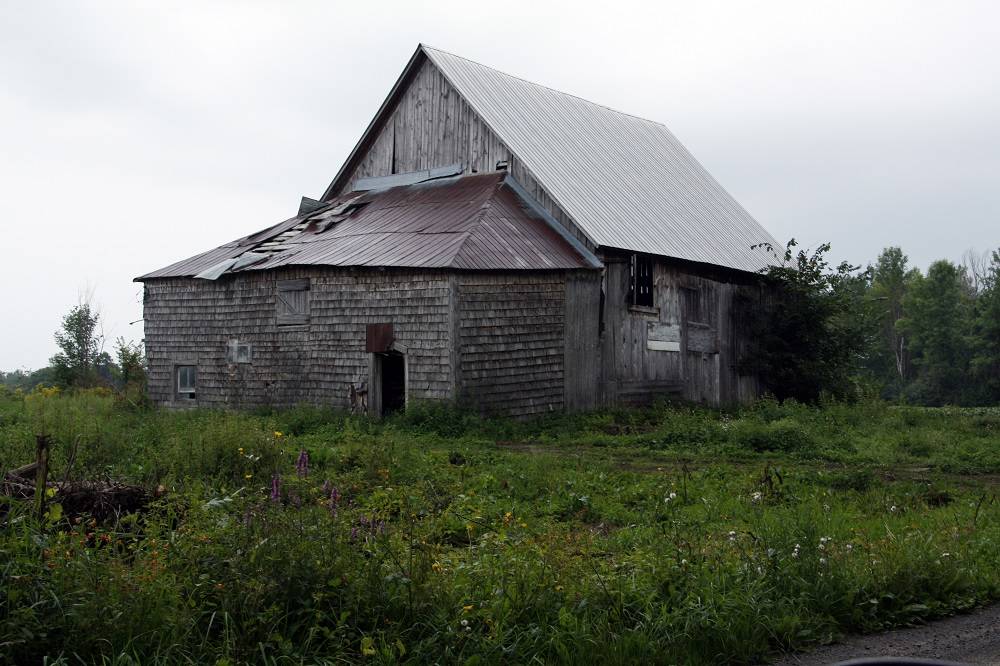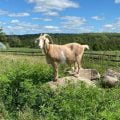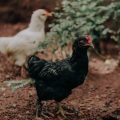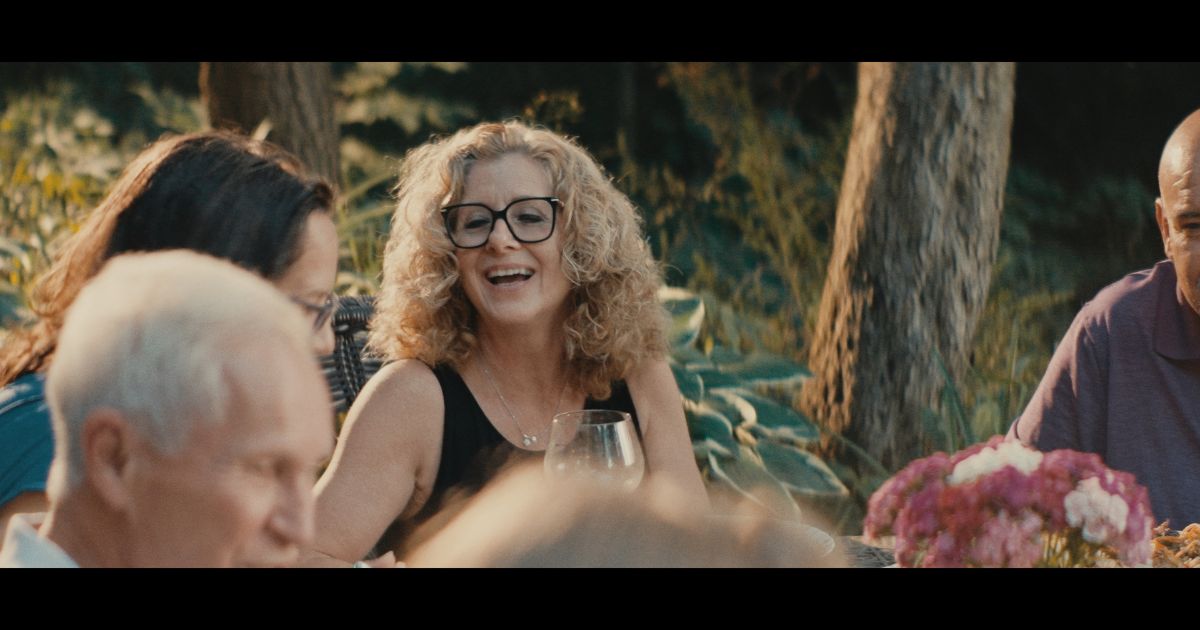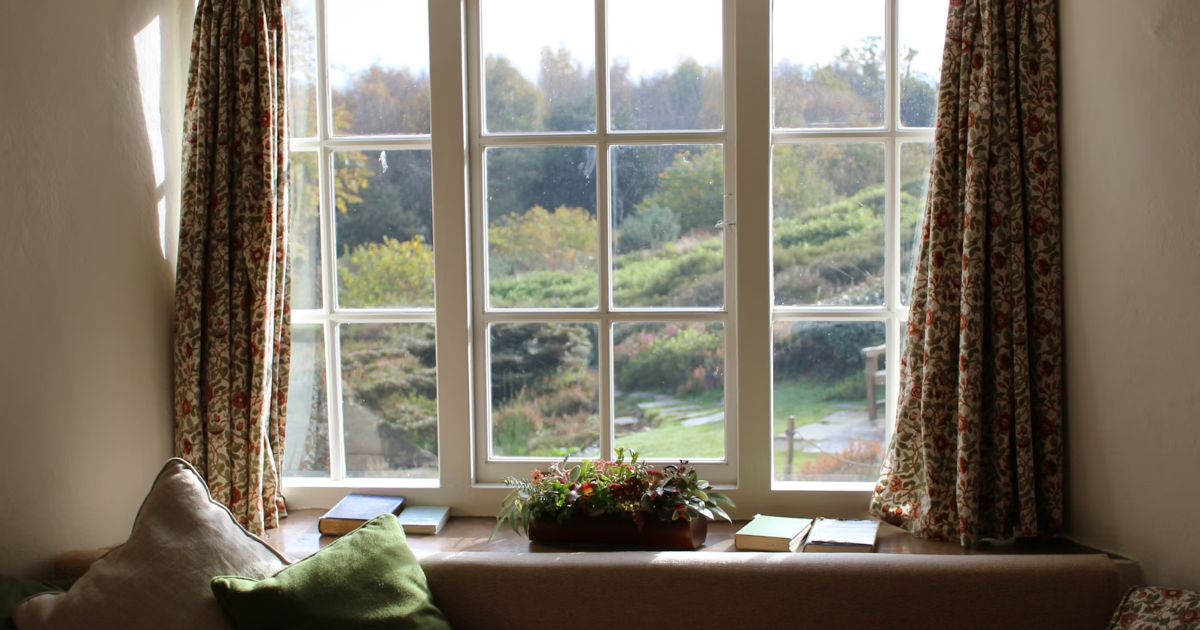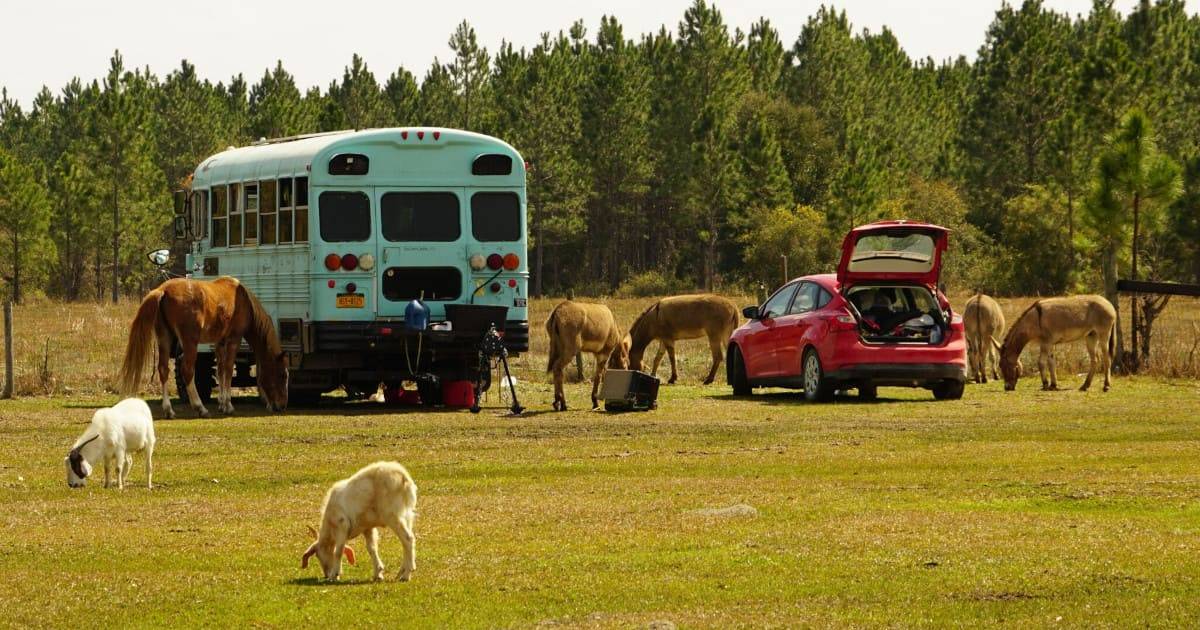It’s an unlikely mishmash of individuals driving down the gravel roads of Leeds County in my Dodge van. Tina’s here from New York, a left-brain/right-brain bridge engineer/theatre director, and John, who repairs musical instruments in Ottawa. Allen and Cliff are news photographers from Montreal and Peterborough, respectively, and then there’s me, a winery tour guide from Prince Edward County. Thus, the minivan.
Tina calls us a disparate group of barn seekers. We had a seat for Russ, too, a self-described hippie/writer, lifelong bookseller and community activist for the arts, but he couldn’t join us this time on another daylong trek to record the portraits and stories of pre-1900 barns.

Despite our differences, we are on a common mission. The magical magnetism that brings us together is the memory of our big, bearded late, great friend Gordon Beck, a 25-year veteran photojournalist at the Montreal Gazette. He and his camera were witness to many of Canada’s most historic moments as he came face to face with popes and prime ministers, the homeless and every other walk of life in the big city.

But there was no place he’d rather be than out in places like Plum Hollow and Devil’s Door Road, meeting farmers and hermits and hearing tales of a bygone era in a forgotten region of rural Ontario. “Cathedrals of the Fields” is what he called the old barns. He held a reverence for each one, and he studied them with a portrait artist’s eye before snapping an eternal image (usually only one) with his camera.

Even while working at the metropolitan daily newspaper, he brought glimpses of country life to the mostly urban readership. His colleagues used to say, “Gord’s the best photographer in the country. But in the city, so-so.” Every chance he had, he’d be on Autoroute 10 or 15, heading off-island.

If the editors didn’t give him the assignment, he’d propose a story to them. One example was his picnic series. The Gazette published full-page spreads of his photos and stories of Quebec’s Eastern Townships and Laurentian region accompanied by food editor Julian Armstrong’s account of the produce and baked goods they procured along the way. The photographer-writer duo later collaborated on a coffee-table book about Quebec food, Made In Quebec, featuring Gordon’s photos of round barns, Highland cattle, and the French and English farmers living on the land.

Food and photography were constant themes in Gordon’s life, and as much as the burly man enjoyed the delicious meals, dining was an opportunity to bring people together and share stories. His circle of friends was wide and deep and an eclectic collection from coast to coast. Each of us probably fell into one of two categories—incredibly well read and intellectual, or a bit of an eccentric character—or both.

His wife, Ewa Bujnicka, was the longtime owner of the popular Polish restaurant Stash Café, in the heart of touristy Old Montreal. Stash has attracted countless celebrities over the years, from separatist René Lévesque in the 1970s to, more recently, actors like Julia Roberts and Leonardo DiCaprio, who always showed up in disguise. Once, legendary Montreal poet and singer Leonard Cohen came in and the restaurant patrons stood and applauded.

Despite being part of the inner sanctum of one of the world’s greatest cities, Gordon heard rural Canada calling him. In retirement, he and Ewa moved into an 1830s stone house at the edge of the Rideau Canal in Merrickville, Ontario, and, later, to a three-storey storefront in Brockville. They created the art gallery and antique bookstore From Here to Infinity. From this new base, Gordon set off on the mission that would be a decade-long final chapter of his life, The Barns Project.

Gordon’s Leeds & Grenville Rural Landscapes page on Facebook has thousands of followers and shows the rich photographic legacy that he left behind. The scenes of the hardscrabble land, barns in all seasons and all weather, and the rugged people he met are his way of preserving the past for the future. Russ Disotell wrote many of the stories that appear on the page, as did John Chambers. Before Gordon died in April 2019, John, also a professional photographer, promised to keep the project alive.
As Brockville Recorder & Times journalist Ronald Zajac quoted Gordon as saying, “It’s using the present to record the past for the future.”
After cancer took away Gordon’s ability to drive at age 75, his friends— photographers and non-photographers alike—took turns with him to explore another quadrant on his map. He preferred cloudy days, better yet a blizzard or heavy rain to add some atmosphere or a wet windshield effect to his barn portraits. Prior to an outing, he could be found at his desk in his bookstore, surrounded by piles of local-history volumes and the famous Belden atlas. Russ, a somewhat permanent fixture in the store, recalls: “The major book Gordon used was Leeds the Lovely by Evelyn Purvis Earle, published in 1851. We also used Thaddeus Leavitt’s History of Leeds & Grenville, published in 1879.”

According to the Canadian County Atlas Project, “Between 1874 and 1881, approximately forty county atlases were published in Canada, covering counties in the Maritimes, Ontario and Quebec.” These have pen-and-ink depictions of specific farms that existed at that time, along with a census of the people and what they produced.
Out on the road, the routine would go something like this: Gordon with maps and hand-scribbled itinerary on his lap would direct the driver through the maze of intersections, stopping at times in the middle of nowhere to decide which way to go. The driver would confirm his instructions with the running joke, “Left, right?”

Simple, clever jokes, puns and twists of the English language would bring a twinkle to the master’s eye, de-robing the gruff manner that most people saw. Upon spotting a barn, his big voice would growl, “Stop. Back up.” Then: “Stop. Go forward an inch. Stop! Back. Right there.” From the passenger seat, he needed the precise angle that would align the barn with the cow and the windmill on the horizon.
One time, he needed two Belgian draft horses to raise their heads from grazing, so we sang them a song and it worked. Again, the twinkle in his eye appeared for our clever success.

He took pleasure in showing up at a farmhouse door, making a cold call to inquire about a barn or a ghost story he had heard, only to find that these folks were regular followers of his barns Facebook page. One man, when we showed up uninvited with an equally gruff manner, opened his door and quipped, “It’s about time you got here.”
Although Gordon probably never threw a bale of hay onto a wagon in his life, the rural folk took to him instantly. He fit right in and commanded respect for his artistry and keen knowledge of local history. Often they didn’t know what hit them.

On one late winter day, the van crunched across ice up the snowdrifts lane to Golden Moment Farm. John Banford opened the door and invited us in beside the wood stove, where three golden retrievers were lying. Within 10 minutes, we were out at the maple sugar house, where Gordon had instructed John’s wife, Norma, to stand on a box in the doorway with her hand on John’s shoulder and a dog at his knee. The rest of us stood back and watched another masterpiece in the making.
Gordon carried his journalistic professionalism with him to the back roads. He knew the future value of the work he was doing, and with limited time left due to his illness, he didn’t waste time on pointless small talk. He wanted names, phone numbers and facts about history for further research.
But one thing that could make him speak out in hyperbole was serendipity, when the stars aligned and great things happened unexpectedly. Although the chance encounters were often too good to believe, it became guaranteed that they would befall him on each sortie. After a long day of meeting farmers, seeing old barns and watching stories unfold before his eyes, Gordon would return home, physically exhausted but exclaiming, “I thought last time it couldn’t get any better, and then each time it keeps getting better and better.”
Of course, Gordon was not the only or the first barn photographer in Canada. Photographers love to photograph old barns, dilapidated houses, junk cars. The old structures hold many stories of lives lived, and their weather-worn abstract nature lends to creative composition with the camera.
Old barn pictures are all over the internet. Just do a Google search or check out hashtags like #oldbarns. There are accounts on Instagram dedicated solely to barn photos, such as American Julie Hamilton’s @barnaddict and Chris Guillet’s @hooray4decay in Alberta. On Etsy, you can find many barn prints for sale.

Barry Gray, Gordon’s longtime photo editor at the Gazette, also holds a passion in retirement for photographing old barns. He even lived in a restored barn in Quebec; he now lives in Ottawa. The two had a friendly turf war about taking barn pictures in each other’s territory—friendly to a point.
“Once he threatened that if my camera was seen in Leeds & Grenville County, there would be some damage done!” says Barry. But as protective as Gordon was about “his” county, he wouldn’t venture beyond the county line. John Chambers recalls that on a few occasions they were on the border of neighbouring Frontenac County. “I could see barns I wanted to photograph, but he said only Leeds & Grenville,” says John.
What set Gordon’s Barn Project apart from most others was the relationships he made. His were not drive-by shootings. He would stop and get permission to publish the photos of their property, and he would write down all of the pertinent details about the structure and its owners over the past century. He revisited the same farms in different seasons. He attended funerals of the oldsters he got to know. And he received tips from the rural community when there might be a photo opportunity of a little church holding its last service or a barn that collapsed right after they photographed it.

Another photographer who goes beyond the call of duty in documenting old barns is Louise Abbott in Quebec’s Eastern Townships. Much of her career was documentary photography for the National Film Board. She knew Gordon and says they shared the passion for vernacular architecture. Currently, she is making a video of the restoration of two round barns near her home. One is a dairy farm in Way’s Mills, where the round barn that the present owner’s grandfather built is still in use. The other is a circa-1912 round barn in Mansonville. Her 2008 hardcover book is called The Heart of the Farm: A History of Barns and Fences in the Eastern Townships of Quebec.
Then there’s Jon Radojkovic, another photographer and journalist who turned to barn preservation. Jon is the president of Ontario Barn Preservation, a new not-for-profit organization. With 30 years of experience building and restoring timber-frame structures, he holds unique insight into how 19th-century barns were built. He has written two books on barns: Barns of the Queen’s Bush (Brucedale Press) tells the history and stories of the rural community in his part of Ontario, through text and pictures of farms and heritage barns; his second book, Barn Building: The Golden Age of Barn Construction (Boston Mills Press), looks at historic barns in Ontario, Quebec and seven northeastern U.S. states.
“I photographed and wrote stories about these amazing structures, travelling thousands of miles to find and record them,” Jon says. “As far as Ontario’s historic buildings and rural culture go, heritage barns are the only buildings left in the original condition from the time they were built, and should be admired, studied, preserved and not torn down or left to rot.”

Ontario Barn Preservation (ontariobarnpreservation.com) has a list of barn repair contractors; a barn directory on Google Maps, featuring barns, photos, descriptions and their locations; a blog with stories about barns and the people who used them; a barn exchange, where barns beyond repair are offered for salvage; and plans to list events such as barn tours.
Growing up in the 1960s and ’70s, my friends and I took barns for granted. We swung on barn doors and jumped around in the hayloft. Fifty years later, the old wooden structures are a sign of the times. The family farm is disappearing, while corporate farming requires bigger facilities for giant harvesting machines. The hay bales we tossed by hand have been replaced by round bales that can only be moved with hydraulic forks. No need for a barn, as the bales are left out all winter in the fields, wrapped in plastic. Non-farmers are buying properties with the old barns and some are converting them into homes. Some become wineries and public spaces for weddings and theatre productions.

In touristy regions like Prince Edward County, two hours east of Toronto, artwork and barn quilts have sprouted on the old structures, with printed guides to see them. No, not giant comforters draped over the rooftops. A barn quilt is an 8-foot or smaller square painted to resemble one section of an actual patchwork quilt. These brightly coloured paintings, with geometric, straight-line designs, adorn barns as well as warehouses, stores and even standalone signs, proudly designed for that particular landowner.
For instance, “Apple Tree” is No. 15 on the map, at The County Cider Company. This quilt square, displayed enpointelike a diamond, portrays a stylized green tree with red fruit. Just down the road is No. 17, “Apple 2,” on the North Marysburgh Town Hall. There is also a quilt named “Apple 1” and one called “Apple Blossom.” Obviously, there was a history of orchards in this community. Other County barn quilts include “Shaster Star,” “Canada 150 Maple Leaf,” “Pinwheel” and “Love That Union Jack,” referring to more local history along the Loyalist Parkway.
Pat Dubyk is in charge of the Prince Edward County Barn Quilt Trails, which produces printed guides and brochures with a photo of each quilt patch artwork. She says it’s a big job keeping track of them all and keeping the brochure and maps up to date.
“Our newest brochure was printed in August 2018,” she says, “and it was already out of date by then. So many more installations have happened and are still happening.” The brochures are available throughout the community, and the group has a poster for sale.

She is firm when she clarifies that the Barn Quilt Trails are separate from the wall murals. And she points out that even some of the barn quilts are not officially part of the trails, although she would like them to be.
At first, I leaned toward Gordon’s way of thinking, preferring the authenticity of the heritage barns. But as gentrification of the countryside spreads and new owners take over, the Barn Quilt Trails are a delight to weekend visitors as well as locals.

“I get so many compliments from residents saying the quilts make them smile, on their drive to work and back home,” says Pat. “They are always thrilled to find a new one.”
Seeing a barn that has a quilt or has become a canvas for a wall muralist is better than seeing the roof caved in and the beams sink and collapse into the snowdrifts. And as a consolation to us barn purists, there is usually one side of the barn left untouched by art.
The story of Canadian barns is evolving. The new chapter adds to the many chapters of the past.

Barn Styles
According to the Canadian Encyclopedia, Canadian barns are classified as Pennsylvania, Dutch and English. In all eastern regions, barns that are circular or polygonal are infrequent, except in Quebec, where many examples abound. The connected barn is of ancient origin and few remain in Canada. Of the types mentioned, the Pennsylvania is most common, except for the little English barn.
A typical site is one with a southerly exposure on rising ground. The barn is built with its great doors opening at the upper level, onto what is called the threshing floor: a broad aisle flanked by stout, squared timbers in bays stretching from floor to ceiling. The granary, opening off the threshing floor, is divided into six to eight bins separated by a passage. At the close of the season, the threshing floor is filled with farm machinery. During the autumn and winter, hay is lowered by chute to the cattle below.

The Pennsylvania barn is ideal for housing animals. Usually the upper structure, or mow, is cantilevered as much as 2.4 metres, giving cattle shelter in the byre behind the barn. Nearly all Canadian Pennsylvania barns are built of pine planks.
The Dutch barn can be seen at its best on each side of the Hudson River, but there are Canadian examples. It’s the only barn type with main doors at the end and not on the side. This barn plan, sometimes called Basilican, has a “nave” or threshing floor and aisles, on one side for cattle and on the other side for horses.
The ubiquitous little English barn has a central threshing floor, with space to the left for threshed grain and on the right for unthreshed grain. This barn, whose measurements were often as little as 16.8 by 7.6 metres, flourished at a period when wheat cultivation dominated agriculture. When more room for storage became necessary after a bountiful harvest, the threshing floor was extended by one bay, with a loft overhead. To achieve this, a pine beam was cut.

The French Canadians’ barns were usually long and low, with a number of circular and polygonal shapes adding variety to the traditional single storey rectangles.
Source: The Canadian Encyclopedia
** Photo Credit Gordon
Here are a few photos of Gordon, meeting farmers in their homes, getting permission to photograph the Barnes for his Facebook page, writing down all the stories and leads for the next article somewhere else. At his retrospective gallery exhibit with Ewa Bujnicka.
Phil Norton has been seeing life through a lens for over 40 years and working professionally as a writer and photojournalist. He freelanced for Harrowsmith and Canadian Geographic Magazines on environmental and outdoor adventure topics, and served as the editor of a bilingual weekly newspaper, The Huntingdon Gleaner in Quebec, and ran the stock photo department for The Montreal Gazette. Later, in Quebec, he shared his experience in high schools leading students on community photo shoots for publication.

